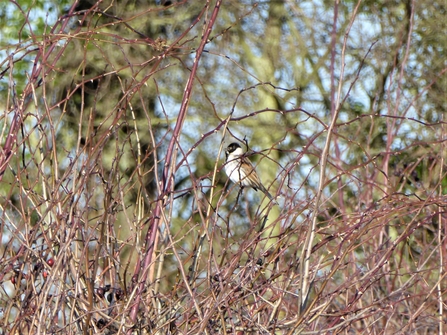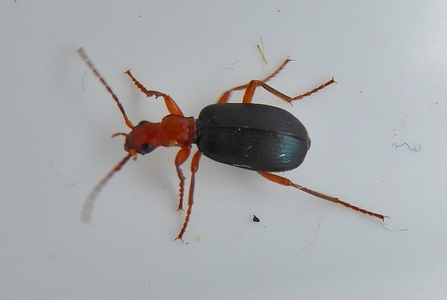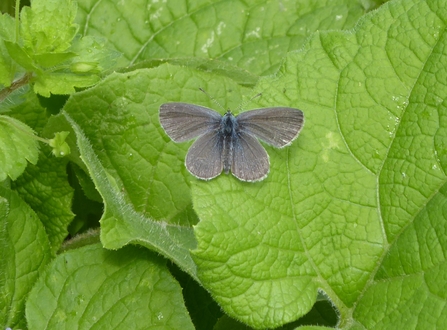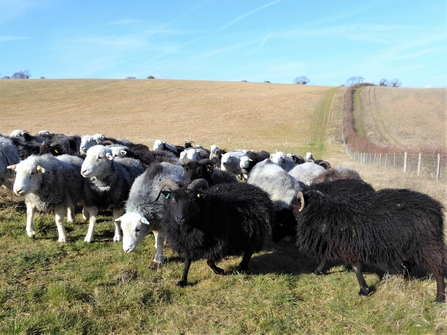
Photo by Dave Watson
~ Written by Dave Watson, Nashenden Down Volunteer Warden
As well as the usual flocks of skylarks and linnets on the arable field last winter, a number of reed buntings were spotted amongst the chaffinches along the hedgerow:

Photo by Dave Watson
~ Written by Dave Watson, Nashenden Down Volunteer Warden
As well as the usual flocks of skylarks and linnets on the arable field last winter, a number of reed buntings were spotted amongst the chaffinches along the hedgerow:

Photo by Dave Watson
Last year, as part of the habitat quality assessment programme, a ground beetle survey was carried out. One of the finds was this Bombardier Beetle Brachinus Crepitans. Classed as nationally scarce, it’s a beetle of calcareous grasslands and arable field margins.
A very exciting sighting in 2017 was a single Shrill Carder bee (left below). This is one of the very rarest bumblebees in the country and is a focus of the ‘Making a buzz for the coast’ project run jointly with the Bumblebee Conservation Trust. Since then another single bee has been seen.
Project officer Rosie Earwaker visited the reserve in July and recorded 10 bumblebee species (there are only 26 in the country!) including another rarity Brown Banded Carder (middle). A number of solitary bee species were also recorded including the Variable Nomad Bee (right), a recent arrival from the continent.

Photo by Dave Watson
A number of Small Blue butterflies have been seen on the North side of the reserve in the last two summers. These are dependent on Kidney Vetch, a plant in the pea family with yellow flowers, the only food plant of its caterpillars.
Following the expiration of our agreement with local graziers, we are now grazing the fields with our own livestock. At different times of the year, you will see our flocks of sheep, in the spring with lambs, and some of our cattle. Our sheep are Hebrideans and Herdwicks, hardy breeds that are ideal for conservation grazing as they are happy with the coarser vegetation that commercial breeds find unpalatable.

Hebridean and Herdwick sheep by Dave Watson